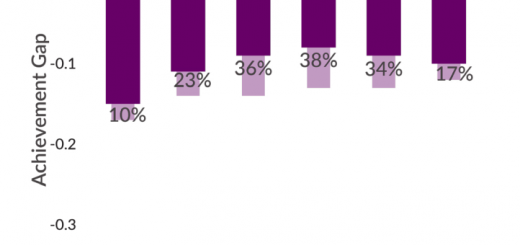Here’s how you can fix teacher shortages in your district
As schools opened their doors this fall, one of the biggest challenges on school leaders’ minds: filling teaching vacancies and addressing teacher shortages.
School districts nationwide are facing unprecedented teacher shortages, with thousands of classrooms unstaffed as the school year begins. Filling these vacancies with certified teachers is a critical need.
With no end in sight to this teacher crisis, some districts across the country are filling instructional gaps utilizing non-traditional teaching and learning models.
In this eSchool News webinar, you’ll hear how districts are working on innovative solutions education leaders can put into place for a single class, school, or the entire district to launch this school year with a fully qualified and certified instructional team.
Experts will discuss:
- Filling vacancies immediately with certified remote teachers for a single class, school, or the entire districts
- Filling critical instructional gaps, expanding course offerings, personalizing learning, or reducing class size with blended or fully online programs
- Empowering learners with tools and resources necessary for high quality education
Related:
Is there a national teacher shortage?
How to solve the teacher shortage remotely
(see all)
More from eSchool News
The challenges facing K-12 leaders as they start the new school year are enormous. For instance, the latest test results from the National Assessment of Educational Progress (NAEP) show that fourth graders’ average reading skills have dropped by five points on a 500-point scale since the start of the pandemic—the biggest decline in more than 30 years.
Teacher leader programs offer opportunities for teachers to assume leader roles and leverage their expertise in teaching without leaving the classroom. Despite some of the potential and promise of teacher leader programs, new programs often struggle with problems that stem from mismanagement that limits their effectiveness.
eSchool Media is pleased to announce the three winners of the eSchool News K-12 Hero Awards: Dr. Ann Hughes, Director of Student Intervention for Sanger ISD in Texas; Kim Leblanc, Chief Technology Officer for Calcasieu Parish School Board in Louisiana; and Daniel Olivas, Network Analyst at Austin Independent School District in Texas.
The Elementary and Secondary School Emergency Relief (ESSER) fund is providing a significant influx of resources for schools across the nation. However, an interesting problem revealed itself as schools find themselves struggling to decide how to spend the largely unexpected funds. In fact, according analysis of the federal ESSER data by the National Conference of State Legislatures, only 19.1 percent of the program’s funding has been used as of Feb. 28, 2022.
School district leaders have no higher priority than to create secure and informed campus environments. Having a campus-wide communication ecosystem is imperative. Being able to initiate a controlled emergency notification protocol to alert, notify and monitor directly from a mobile device, classroom audio system, or interactive flat panel is essential.













